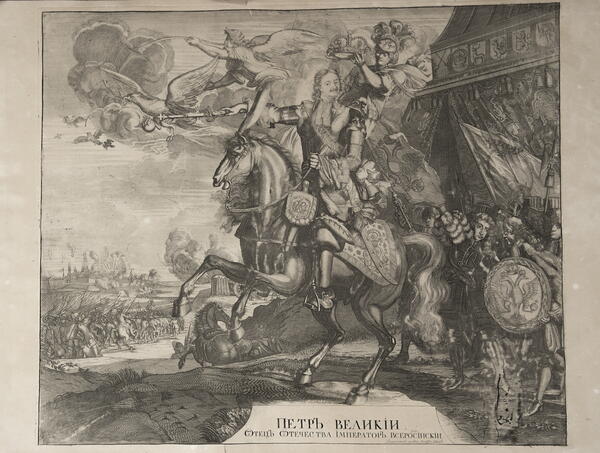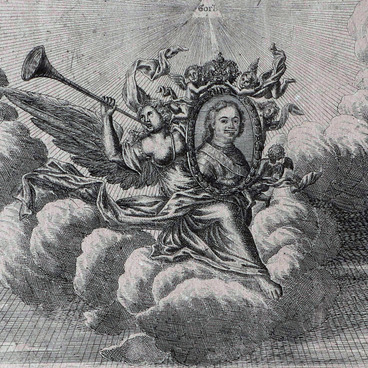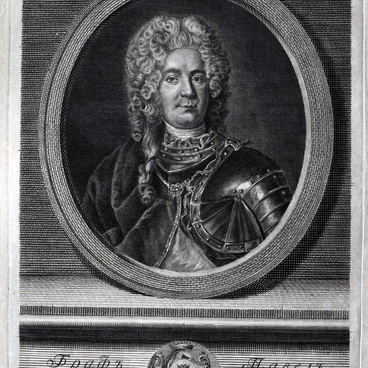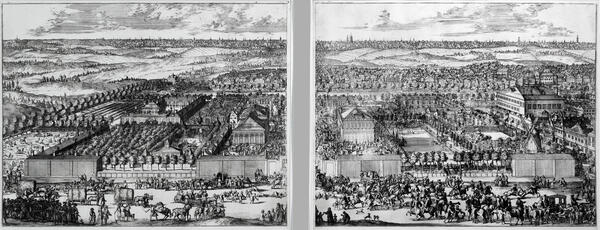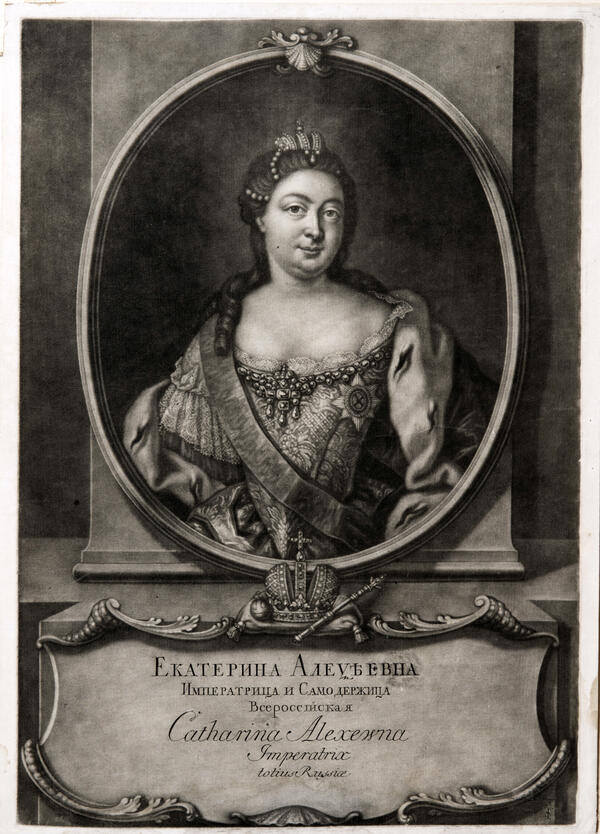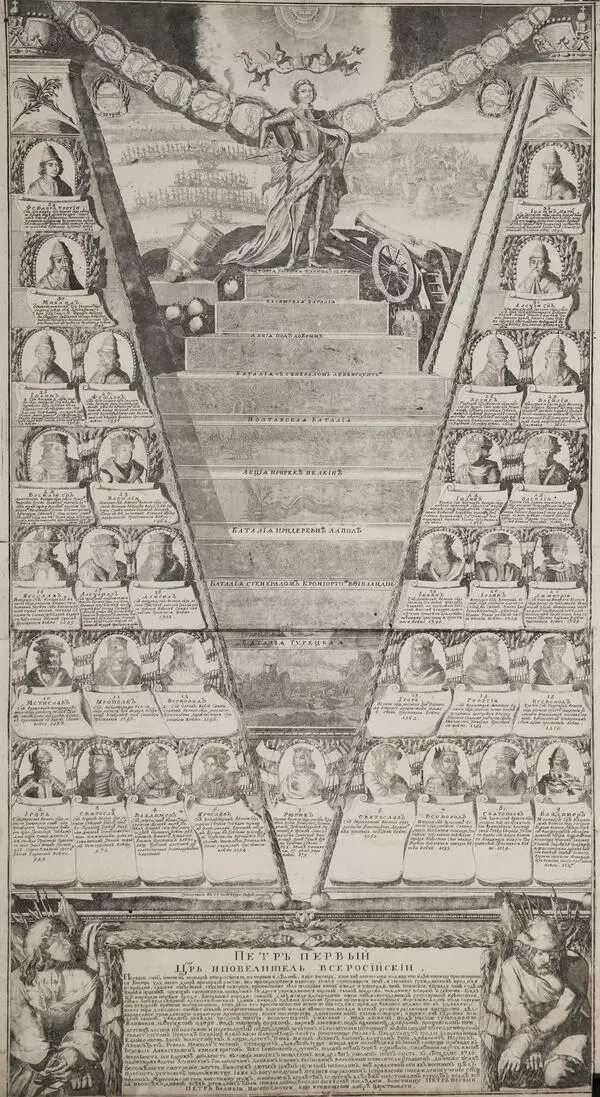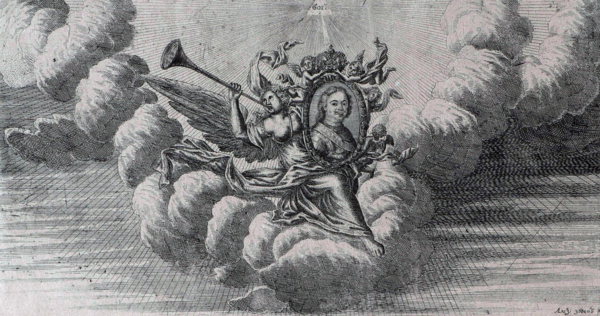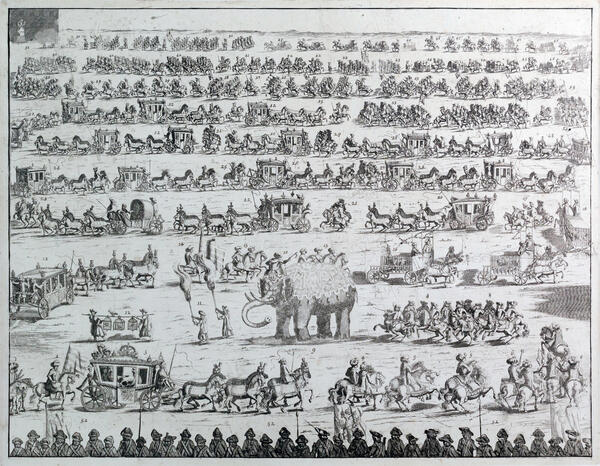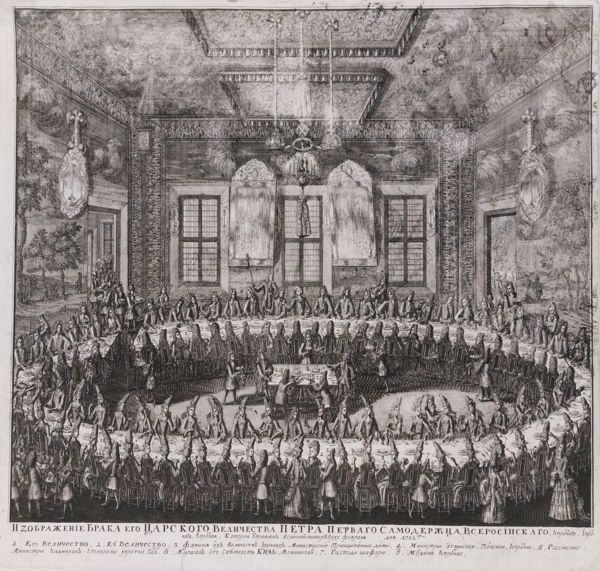In the first quarter of the 18th century, engraving was not just an art form — it was an important means of spreading information, propaganda and also served educational purposes. Stylistically, engravings were divided into two categories: artistic and technical. The former were carefully crafted sheets, and the latter consisted of plans, drawings and maps, which possessed little value from an aesthetic point of view but were of great historical value.
Engravings were printed as a quick response to important events and key moments in history. For this purpose, in the first years of the Great Northern War, the army was accompanied by a whole marching workshop — printers with a printing mill and two engravers. And Peter the Great was their very demanding and most important customer.
The presented engraving is dedicated to the victorious Battle of Narva and together with the portrait of Alexander Menshikov it forms a unified composition. The images are connected with the panorama of the battlefield in the center with the tsar and the prince rushing to the besieged fortress from opposite sides, and decorative curtains at the edges.
The sheets employ the same techniques. To the right and to the left of the horsemen are their attendants carrying the imperial shield with a double-headed eagle and the princely shield with the family coat of arms. The figures of Peter and Menshikov are intentionally larger than their retinue. The space of the engraving is multifaceted: the foreground shows the main characters, behind them is a band of marching troops, and the besieged fortress standing deep in the background.
The tradition of the formal portrait required giving monarchs the features of ancient gods and heroes or placing deities next to them. In this engraving, Peter is accompanied by Minerva (with the imperial crown above the tsar’s head), Pheme — the goddess of glory, and the eagle.
In the original version of the engraving, Pieter Pickaert depicted Peter with a long face wearing a wig in the Western European manner. Due to poor portrait similarity, the engraving was banned from publishing and required revisions from another engraver, Alexey Zubov.
Zubov preserved the
composition and only changed the monarch’s head. He also added an inscription
below the image: “Peter the Great, Father of the Country, Emperor of All of
Russia”.

